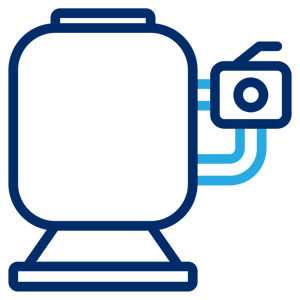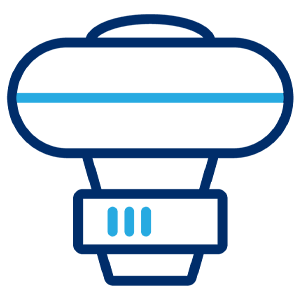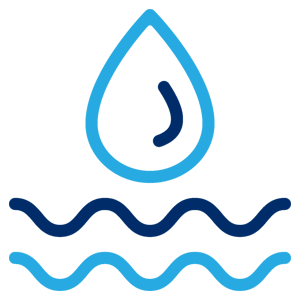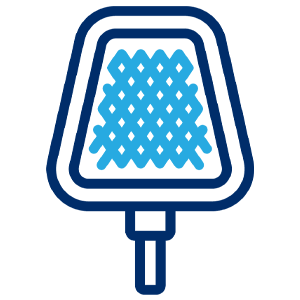FREE Standard Shipping On All Orders $100 or More!*

Hurricane Pool Prep and Recovery
As hurricane season approaches, it's important to prepare your pool for potential storms. Hurricanes can cause significant damage to pools and surrounding areas, but there are steps you can take to minimize the impact. In this article, we'll provide tips and guidelines on how to prepare your pool for a hurricane. We'll cover everything from securing loose items to adjusting chemical levels, so you can be confident your pool is ready for whatever comes its way.
Pool Prep Before The Hurricane
Hurricane season can be a stressful time for pool owners, as they face the potential for damage to their pools from high winds, heavy rains, and flooding. However, with proper preparation and recovery, pool owners can minimize the damage and get their pools back to normal quickly. Here are some tips for preparing and recovering your swimming pool during hurricane season, including:
Protect equipment

Add extra chlorine

Leave pool uncovered

Don't Drain the Pool
Water in the pool provides weight to keep the pool in the ground. If you empty your pool, you risk the possibility of lifting your pool off its foundation.
Turn Off Electricity to Pool Equipment
Make sure circuit breakers at the main electrical panel are turned off. Pool equipment such as pump motors, pool lighting, automatic chlorinators, and heaters should remain off throughout the storm.
Store All Pool Accessories & Covers
Remove all pool floats, toys, and accessories before the hurricane begins. Deflate if necessary, and store all floats and accessories in a safe location. Additionally, ensure you remove and store all pool covers and reels out of harm's way.
Add Extra Chlorine to the Pool
Keep the pool water sanitary and prevent algae growth by adding extra chlorine and circulating the pool as much as possible before the storm. Then, turn off the power at the circuit breaker. Using a floating chlorinator is a great way to provide your pool with continuous chlorine, even if you can't run your pump.
Leave Pool Uncovered
While it might be tempting to throw a safety cover over your pool to protect it during the storm, doing so can actually cause more harm than good. Falling debris can seriously damage your pool cover, and even cause it to sink into your pool. And if you think removing a safety cover from the top of your pool is hard, you definitely won't like removing one from the bottom of your pool!
Pool Recovery After The Hurricane
Once you can safely attend to your pool after the hurricane, don't be surprised if your beloved oasis looks more like a neglected swamp. The quicker you can get to work removing debris, cleaning, and sanitizing the water, the easier your pool recovery process will be. Work through the following steps to get your pool back to its former glory:
Skim and vacuum pool

Backwash and clean filter

Balance water chemistry

Don't Drain the Pool
While it might seem easier to simply drain the dirty water out of your pool rather than clean it, doing so can cause serious damage. After a severe storm with heavy rainfall, the water table underneath your pool is likely to have risen significantly, putting pressure on the pool structure. Draining your pool can lead to the entire pool popping out of the ground due to the stress of the elevated water table. However, if the water level in your pool is above the skimmer line, you can do a partial drain to lower the water to an appropriate level.
The safest solution is to roll up your sleeves and put in the elbow grease to get your pool back into shape. It may take a few days, but taking the time to properly clean your pool will prevent major damage and an expensive headache!
Skim, Brush, & Vacuum the Pool
Use a skimmer or leaf net to remove as much debris from your pool as possible after the hurricane. Then, thoroughly brush your entire pool to loosen any dirt and contaminants from the walls and floors. Finally, manually vacuum your pool, or turn your automatic pool cleaner on for at least one full cycle.
Clean Skimmer Baskets
Empty your skimmer and pump strainer baskets, before turning the pump and filter back on. If the baskets are clogged with debris, they will restrict water flow to your pump and filter.
Clean & Backwash Filter
Before turning your pool's plumbing system back on, clean and backwash the filter to clear out debris and particles. And fair warning, you'll likely have to do this a few more times before your filter is completely clear of debris!
Additionally, check the integrity of the filter media while cleaning or backwashing. If you have a cartridge filter, ensure the cartridges are still in good shape, and replace if necessary. If you have a D.E. filter, now is a great time to replace the D.E. powder.
Balance & Shock the Pool Water
Once your pool is debris-free, it's time to turn your attention to balancing and sanitizing the water. With the pump and filter on, use a test kit to evaluate the water chemistry and begin balancing the water, starting with Total Alkalinity (TA). After you've adjusted the TA level, you can continue balancing the other elements, like pH and Calcium Hardness. Stick to the following chart when adjusting your pool's water chemistry levels:
- Total Alkalinity: 80–120 ppm
- pH: 7.4–7.6
- Calcium Hardness: 200–400 ppm
- Cyanuric Acid: 30–50 ppm
After balancing the water, it's time to sanitize the water. The debris left in your pool from the hurricane likely deposited an abundance of organic contaminants and bacteria in the water. And while your pool might look clean at this point, adding a strong dose of pool shock to the water is the cherry on top of your cleaning process. Add cal-hypo or dichlor shock until the chlorine level reaches 10.0 ppm to prevent bacteria and organic contaminants, like algae, from taking up residence in your pool.
Run the Pump & Filter Until Water is Clear
Finally, after all your hard work clearing debris, cleaning the pool, and balancing the water chemistry, you can sit back and let the pump and filter take over. Allow the circulation and filtration system to run continuously until the pool water is completely clear. This may take several days, depending on how dirty your pool was, so don't be alarmed if the water doesn't clear up in a few hours. Adding a water clarifier is a great way to speed up the process.
Keep an eye on the skimmer and strainer baskets, in addition to the filter pressure gauge. Empty the baskets as soon as they fill up, and backwash your filter if the pressure gauge reads 8–10 psi above the normal starting rate.
Hurricane season can be a stressful time for pool owners, but with proper preparation and recovery, you can minimize damage to your swimming pool and get it back to normal quickly!